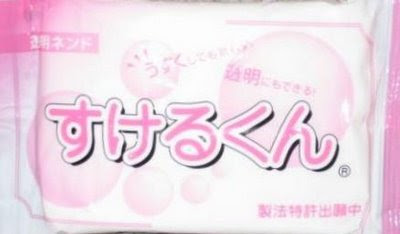 In the Fall 2003 issue of PolymerCAFE I demonstrated using Flecto Varathane as a transfer medium for inkjet images on polymer clay. Back then it was said that T-Shirt Transfer paper was the only way of doing transfers from an inkjet. Behind the scenes this wasn't true. Actually it was two of my friends that clued me in to the idea to try something different. During a workshop retreat that Gera Scott Chandler hosted in 2002, she had been using and demonstrating Acrylic Medium with good results and Cheryl Trottier introduced the coated paper method which used no medium, but involved burnishing onto clay and letting the plasticizer of the clay do the work.
In the Fall 2003 issue of PolymerCAFE I demonstrated using Flecto Varathane as a transfer medium for inkjet images on polymer clay. Back then it was said that T-Shirt Transfer paper was the only way of doing transfers from an inkjet. Behind the scenes this wasn't true. Actually it was two of my friends that clued me in to the idea to try something different. During a workshop retreat that Gera Scott Chandler hosted in 2002, she had been using and demonstrating Acrylic Medium with good results and Cheryl Trottier introduced the coated paper method which used no medium, but involved burnishing onto clay and letting the plasticizer of the clay do the work.
T-Shirt Transfer paper is very expensive and I wanted to find a different way. After this, other techniques using TLS, Fimo Gel and Kato Liquid Polyclay became popular choices for inkjet transfers, but also using the same coated paper I had described. I have no idea why Flecto Varathane didn't become just as popular because it actually makes nice 'matte' transfers and has dual purpose in claying as well. I've heard recent rumors that coated paper maybe more difficult to find now, but I just googled "Staples Office Supply" and they still carry it, although it is 'heavyweight' or 45 lb stock rather than 27lb. I'll be purchasing some next week on my trip out of town and report on it.
Materials:
1 small block White Premo (Premo seems to work best)
Tissue blade
Tile or other suitable worksurface
cardstock
Flecto Varathane Diamond Wood Finish - Interior (Waterbased)
Alcohol (Gin, Vodka, Rubbing alcohol)
Epson High Quality, Photo quality (matte) for Inkjet printers (look for the word “coated” on the packaging). #384737 approx. $17.96/50 (CDN)
Pasta Roller Machine
Inkjet images
Step 1: Select images and print onto the Epson paper. I saturate the ink setting to make the colours brighter and bolder as the transfer will look a bit duller. Make sure you print on the smooth coated side, which looks whiter and feels smoother. Cut our your images and don't leave a border.
Step 2: Roll out the white Premo clay to a #3 setting on your pasta machine. Lay the clay sheet onto cardstock paper. Place images face down onto clay and cut around image. Gently remove images from clay.
Step 3: Working on one image at a time, bush Flecto onto the raw clay. Lay image face down onto the clay and burnish lightly. Be careful that paper doesn’t slide around as it sticks right away.
Once it sticks do not lift paper off the clay as colour may transfer at this point. Repeat with all images. (Photo 1)
Step 4: Using a clean brush, dip into alcohol and saturate image by blotting it. Lightly press and burnish with finger, gently wiping, but being careful not to poke hard into the clay with the brush as to dimple the surface or rubbing off the paper. You will see the image appearing through the paper. Any “whitish” spots you see are indications that the image is not quite burnished onto the clay. You may need to re-wet the brush and the image a few times. You will see a complete image through the paper when done. Let dry, this will take approx. 10-15 minutes. At this point you can trim excess clay around image, but be careful not to cut or press into paper. (Photo 2)
Step 5: Bake clay and paper according to clay manufacturers directions. Turn off oven and let cool.
Step 6: Remove image by peeling from a corner. If it sticks too much, try another corner or simply soak in water and lightly rub. Paper will come off with ease. Lay aside to dry.
There is a good write up on Cindy Lietz' site about transfers as well....






























